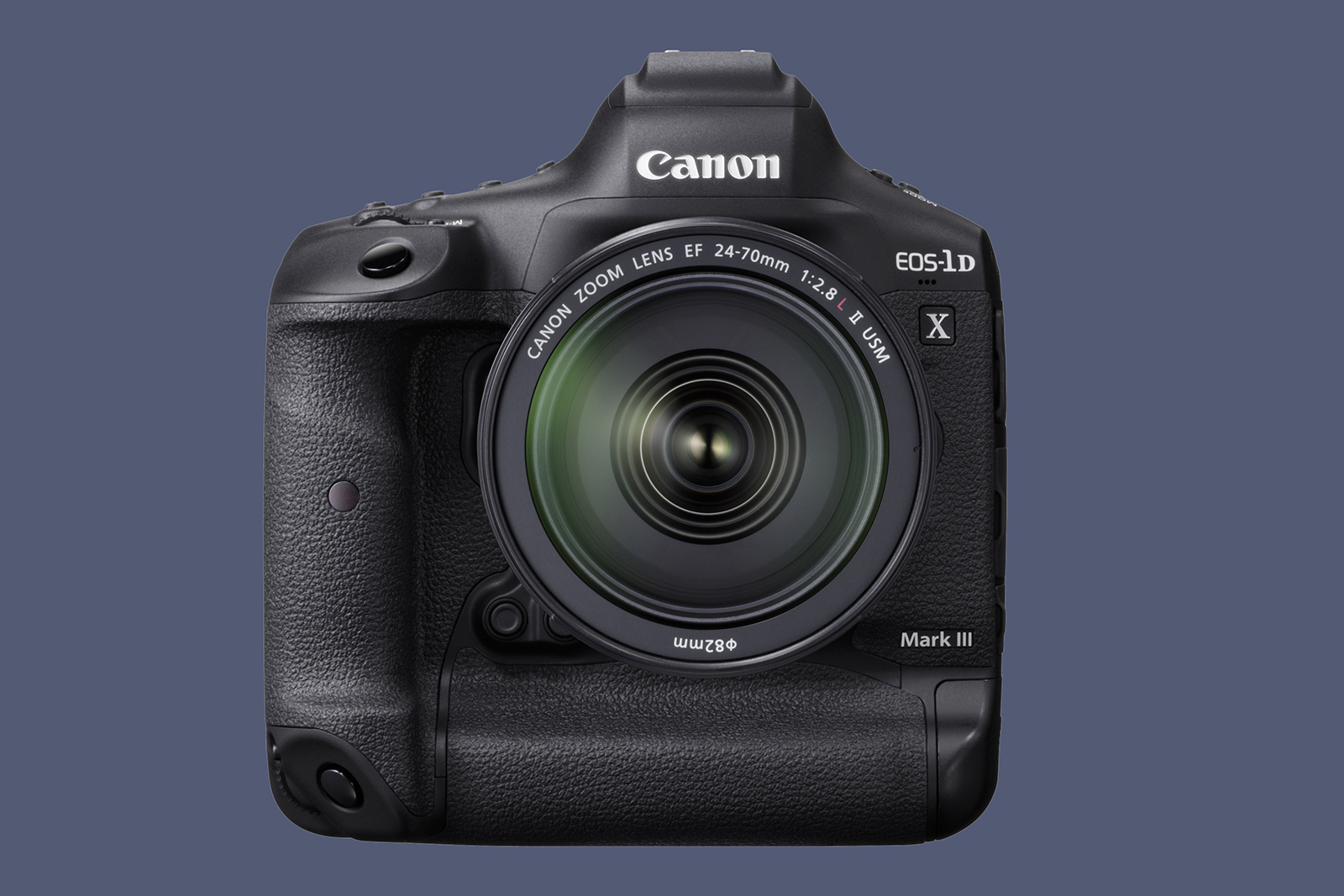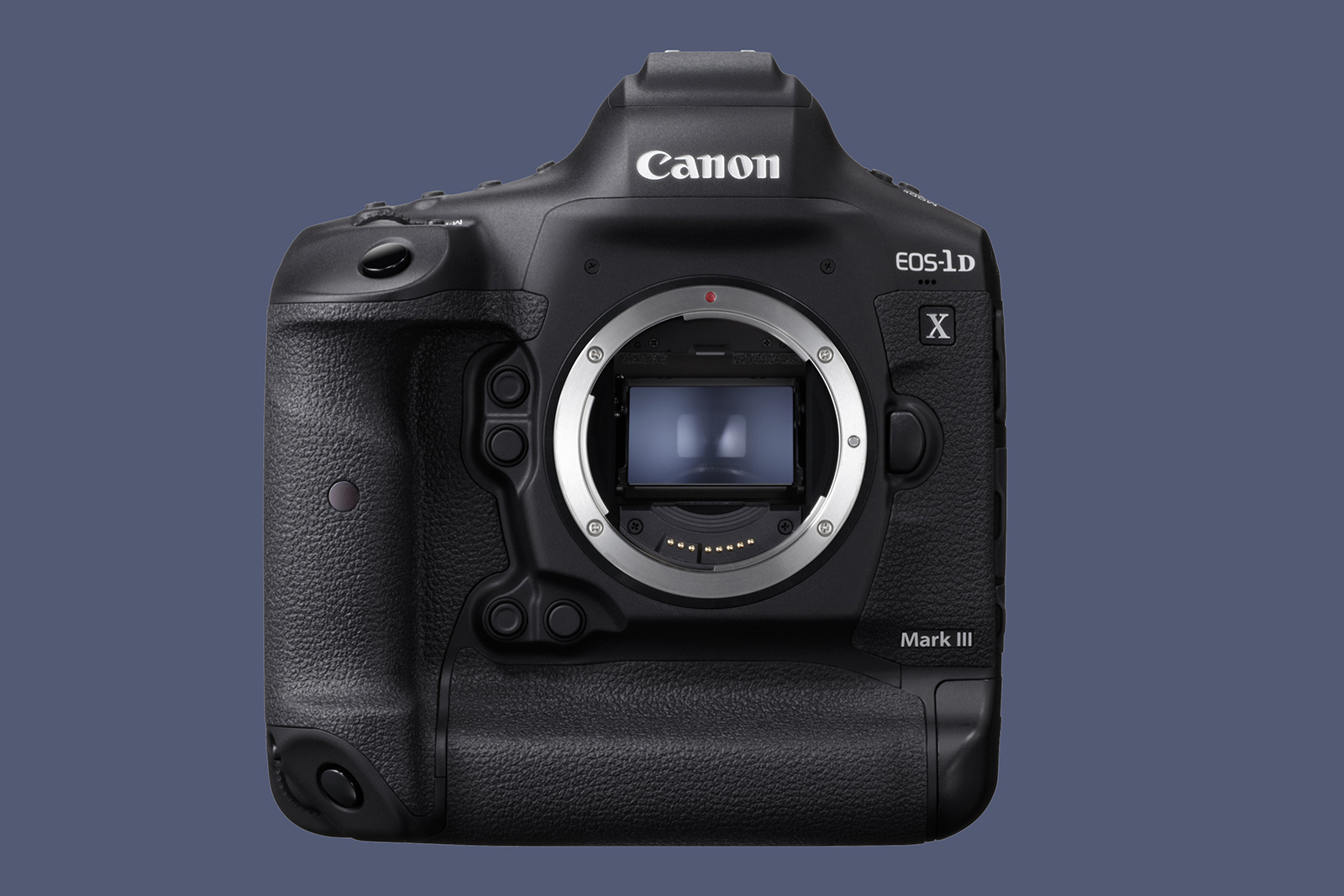Canon’s best DSLR is getting a speed boost — and it’s serious enough to compete with the fastest pro-level camera on the market. On Thursday, October 24, Canon confirmed the development of the Canon EOS-1D X Mark III. Building on the Mark II, Canon says the camera will capture and deliver the shot “faster than ever before” using enhanced burst speed up to 20 frames per second (fps), an updated autofocus system, and faster Ethernet. The high-end pro camera also adapts the HEIF format, a JPEG-replacement first launched on smartphones, with 10-bit color.
While Canon hasn’t shared the full specs or release date yet, the company teased some of the camera’s biggest features. The full-frame camera will offer a top burst speed of about 20 fps using Live View and 16 fps using the optical viewfinder. Dual CFexpress card slots allow for five times the RAW burst buffer of the Mark II.
Deep learning helps to enhance to camera’s autofocus speed to follow those quick bursts — Canon says the EOS-1DX Mark III will have enhanced tracking and stability over the current flagship. The Mark III will use a 525-point Dual Pixel autofocus system in live mode, while using a new autofocus sensor with the optical viewfinder that’s about 28 times better, Canon says.
That speed is helped by a new processor that also allows for better high ISO shots as well as an all-new sensor. Canon hasn’t shared the sensor’s resolution yet, but promises better color and dynamic range with 10-bit HEIF files. Normally a file type found on smartphones, the addition of HEIF allows for enhanced color and dynamic range from a non-RAW file, since JPEGs typically offer 8-bit color. At the same quality, a HEIF file will also be smaller than a JPEG, but without the full specs, it’s unclear if the higher quality HEIF files are smaller than the JPEG option.
That color depth extends to video — the Canon EOS-1D X Mark III boasts a 60 fps 4K video, including 10-bit 4:2:2 Canon Log recorded internally. While mirrorless cameras have hit the 60 fps 4K, that’s a competitive frame rate for DSLRs, while many cameras with 10-bit recording require external recording equipment.
Canon says the Mark III will look and feel like the earlier cameras in the series. Built from a magnesium alloy body, the camera includes weather sealing. The design isn’t all old school though — some of the controls will light up and a new control for selecting AF points will also be integrated into the design. Canon says the camera also offers improved battery life.
The 20 fps top speed and deep-learning-enhanced autofocus is a clear grab for attention in an industry that already has the 20 fps Sony a9 and the 15 fps to 60 fps Olympus OM-D E-M1X. The live view burst likely aims to compete in that same arena, particualrly for photographers not ready to leave the battery life of a DSLR yet. The 60 fps 4K takes aim at mirrorless cameras like the Panasonic GH5 — though a flagship full-frame DSLR probably won’t come anywhere close in price.
Canon hasn’t shared a release date or price — though by the specs, we wouldn’t be surprised to see the Canon EOS-1D X Mark III (or the Nikon D6) at the 2020 summer Olympics. The retail price on the Mark II body is just under $6,000.
Editors' Recommendations
- Canon EOS R5 vs. Sony A7S III vs. Panasonic S1H: Best full-frame for video?
- Olympus OM-D E-M1 Mark III vs. OM-D E-M1X: High-performance flagships compared
- Where were all the cameras at CES? 2020 will see fewer, but better, releases
- Canon EOS-1D X Mark III brings stunning stills and RAW video to an impressive DSLR
- Nikon Z 50 vs. Canon EOS M6 Mark II: Nikon’s newest takes on Canon’s champ






